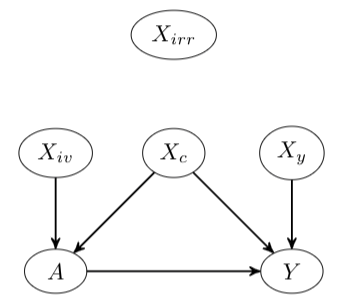The Doubly Robust (DR) estimation of ATE can be carried out in 2 steps, where in the first step, the treatment and outcome are modeled, and in the second step the predictions are inserted into the DR estimator. The model misspecification in the first step has led researchers to utilize Machine Learning algorithms instead of parametric algorithms. However, existence of strong confounders and/or Instrumental Variables (IVs) can lead the complex ML algorithms to provide perfect predictions for the treatment model which can violate the positivity assumption and elevate the variance of DR estimators. Thus the ML algorithms must be controlled to avoid perfect predictions for the treatment model while still learn the relationship between the confounders and the treatment and outcome. We use two Neural network architectures and investigate how their hyperparameters should be tuned in the presence of confounders and IVs to achieve a low bias-variance tradeoff for ATE estimators such as DR estimator. Through simulation results, we will provide recommendations as to how NNs can be employed for ATE estimation.
翻译:Doubly Robust (DR) ATE 估计可以分两步进行,第一步是模拟治疗和结果,第二步是将预测结果插入DR估计仪。模型在第一步的偏差导致研究人员使用机械学习算法,而不是参数算法。但是,强大的混杂者和/或仪器变量(IVs)的存在可以导致复杂的ML算法,为可能违反假设假设假设的治疗模型提供完美的预测,并提升DR测算器的差异。因此,ML算法必须受到控制,以避免对治疗模型作出完美的预测,同时仍然学习连接者与治疗和结果之间的关系。我们使用两个Neural网络结构,并研究如何在Coverfounders和IVs的存在中调整他们的超参数,以便为ATE测算器等测算器实现低的偏差权衡。通过模拟结果,我们将就如何使用NNU进行估算提出建议。






